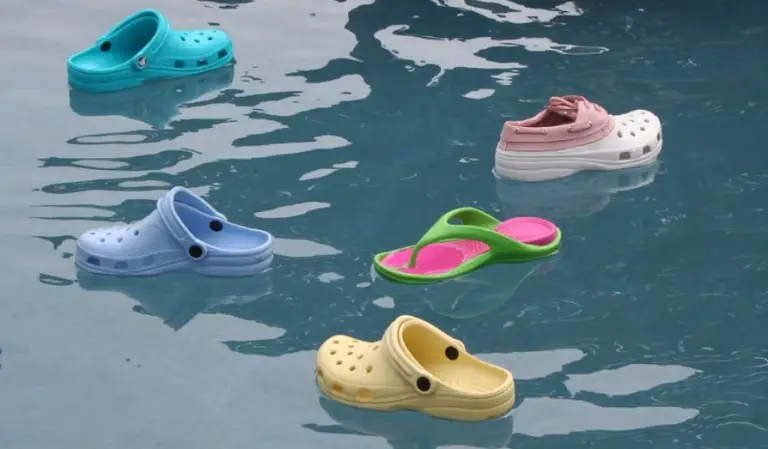Blog
Are Crocs Waterproof?
Are Crocs waterproof? It’s one of the most frequently asked questions because we see more and more people wear Crocs in slippery places every day.
Can these funny-looking shoes truly escape the damage from water? Or, are they only another trend that has no beneficial function?
Let’s delve into some facts about the water-resistant ability of Crocs.
Contents
Fact 1. Not All Crocs Are Waterproof
In short, not all Crocs are waterproof. It’s true that the essence of Crocs lies in the Croslite material, though the products made by Crocs still vary greatly depending on the design and the material.
For example, if you drop a fur Crocs and a leather Crocs into the water, the effect they receive won’t be the same. You can check if your Crocs are waterproof by reading the information tags carefully.
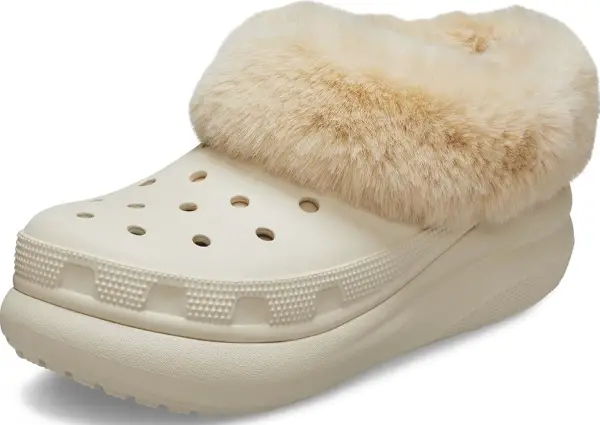
It’s noteworthy that the way we perceive “waterproof” in Crocs is rather subjective.
Crocs often have water resistance, which is sufficient for casual users to consider them waterproof. They are in no way on the same level as technically waterproof shoes that we only see in heavy industries in unfavorable and extreme conditions.
Check more: When Did Crocs Come Out?
Fact 2. Crocs Can Get Wet
When coming into contact with water, Crocs can still get wet. However, that doesn’t mean they are prone to damage.
Designed to be shoes for boating, they are made to dry quickly and not soak up water. The respective labels will state clearly whether they are waterproof/water resistant or not.
- Fuzzy Crocs are the enhanced version of the classic Crocs with a fuzzy liner to keep the user’s feet warm all the time. These liners are unfortunately not waterproof, so they can get wet and thus need gentle washing.
- Crocs Literide 360 (and its siblings in this product line) have much fewer ventilation ports compared to other Crocs. It gets wet too, though the strong water resistance allows it to dry in a blink.
- Light-up Crocs are not water-resistant because the LED lights should never come into contact with water! Although the lights are carefully embedded inside these Crocs, submerging them underwater might lead to damage.
- Glitter Crocs are another fun creation that we ought to pay more attention to. The adhesion between Crocs and their glitters is very strong, yet too much water in a long time might cause the glitters to detach and fall off.
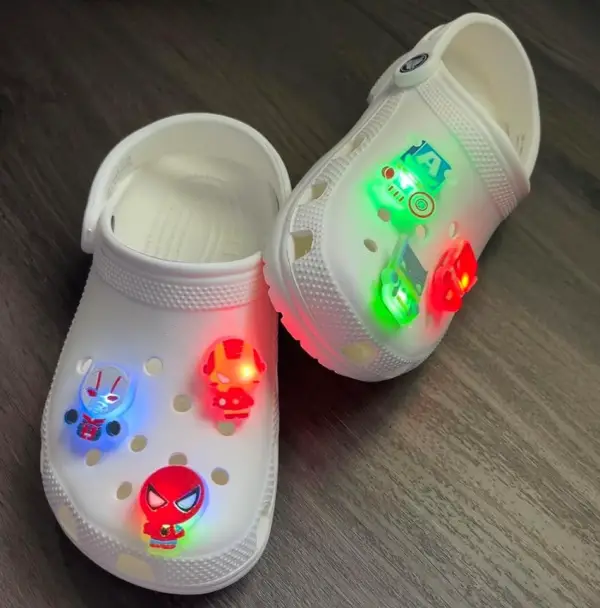
Fact 3. Crocs Can Be Slippery When Wet
Aside from the discomfort of wet shoes, another concern for many people is how safe it is to wear Crocs on wet terrain. We are not lucky here, for Croslite and its smooth soles don’t ensure a strong grip on slippery surfaces.
We don’t recommend wearing Crocs if you plan to walk on wet surfaces and safety is your priority. In dire situations, you can try these simple methods to increase slip resistance.
- Use sandpaper or rocky pathways to scuff the soles of your Crocs for more friction.
- Create tread patterns on the soles by using a glue gun. They will feel less slippery when the glue dries and solidifies.
- Rely on additions such as anti-slip grit tapes, grip sprays, or ice grips.
Read more: Are Crocs Non-slip Shoes?
How Are Crocs Waterproof?
Behind the Crocs’ waterproofing properties is the contribution of several features.
Let’s take a closer look here, because you can find a way to improve your experience when you know where the functions are from.
Material
The most important material in the production of Crocs is a patented, unique foam called Croslite. It resists and does not absorb water, hence Crocs perform as effectively as ever when water bodies are involved.
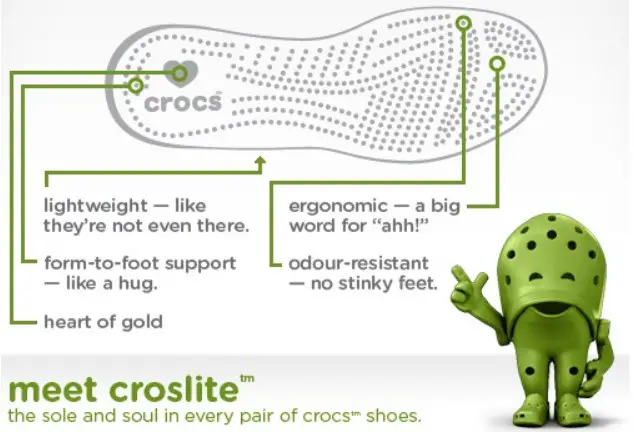
Once again, we need to emphasize that the “waterproof” concept in Crocs is influenced by the water resistance of their products. Croslite is not the same as fully waterproof rubber used for safety boots.
Construction
The seams in Crocs shoes have been minimized as much as possible, which results in a nearly sealed structure. It allows little to no water to penetrate, so your Crocs will never be soaked with water.
Furthermore, Crocs tend to incorporate a drainage system into their designs, which is a calculated arrangement of ports to relieve accumulated water quickly and regain your comfort.
Fit
Crocs resemble water shoes because they are made to fit your feet as closely as possible. It leaves so little room for water to get in between and creates a slushy mess between your skin and the shoes.
Outsole
The Croc outsole doesn’t lose balance when you walk on a wet surface. However, it is another story if you soak Crocs in excessive wetness or use them in severe conditions such as snow and rainstorms.
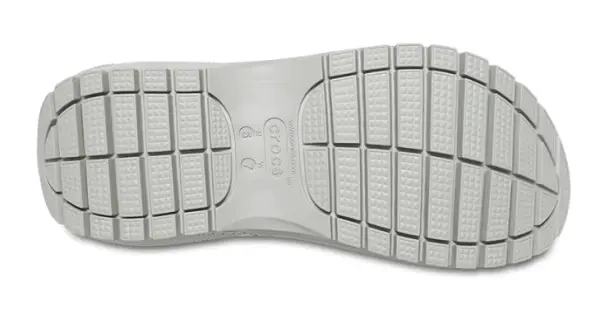
Quick-dry Properties
Croslite is impervious to water, so the water particles only linger on the surface of your Crocs instead of penetrating it and getting to the layers underneath. This is the main reason Crocs dry so quickly.
This feature allows us to participate in aquatic activities even if there are stains, since we can rinse Crocs anytime we want and have them ready for use in mere minutes.
How To Make Crocs Waterproof?
Some Crocs are not waterproof, especially the classic version that is extremely well-known. Nonetheless, we have a few tricks that work for pretty much all Crocs designs.
The simplest method is to give your Crocs a waterproof coating. This layer will protect against water and keep your feet dry for a much longer time. Another way would be to seal the material.
However, the downside of water treatments is that they might stiffen your shoes tremendously. You should consider it very carefully if you want something soft and molding for your feet.
The treatments have another permanent weakness. Your shoes need to undergo these treatments regularly for them to stay effective.
FAQs
1. Can I wear Crocs for swimming?
Most water shoes have woven mesh and are watertight, so they can stick to our feet while letting water infiltrate and slip through. The Crocs Literide Pacer is one of the Crocs made with these features in mind.
Although Crocs cannot replace shoes that were professionally made to be worn in water bodies with powerful currents, they are acceptable if you want to have the funky Crocs on while you swim!
2. Is it okay to wear Crocs in the snow?
Crocs are lightweight and breathable, so they are not good at retaining a normal temperature in cold weather. Foam doesn’t preserve heat efficiently, and the holes only make the warmth dissipate more quickly.
As we previously mentioned, Crocs become slippery and unsafe when exposed to water for too long. Combined with the inability to keep you warm, they are even less suitable for snow.
You might want to try Crocs Boots for snow if you want to be warm and steady at the same time. Crocs with high cuts and socks are another solution, although they won’t be as good as the boots!
Final Words
Not all Crocs are waterproof, the Fuzzy Crocs are a good example.
Nonetheless, we have the choice to make our Crocs perform better on slippery surfaces if we are not yet satisfied with how quick and easy it is to keep Crocs clean.
Don’t forget that they can get uncomfortable to walk in when immersed in water, and you will be all prepared to bring your new Crocs home.

